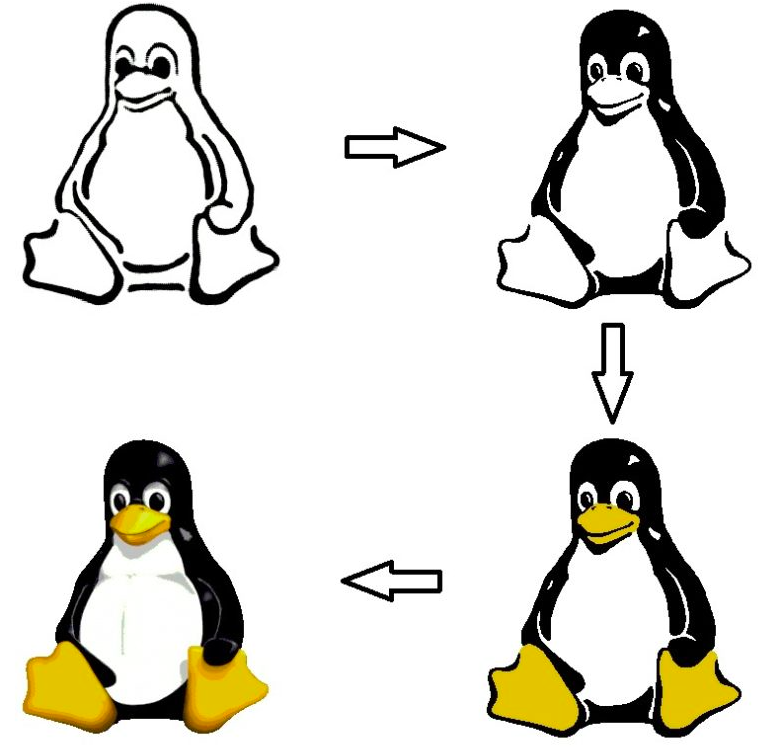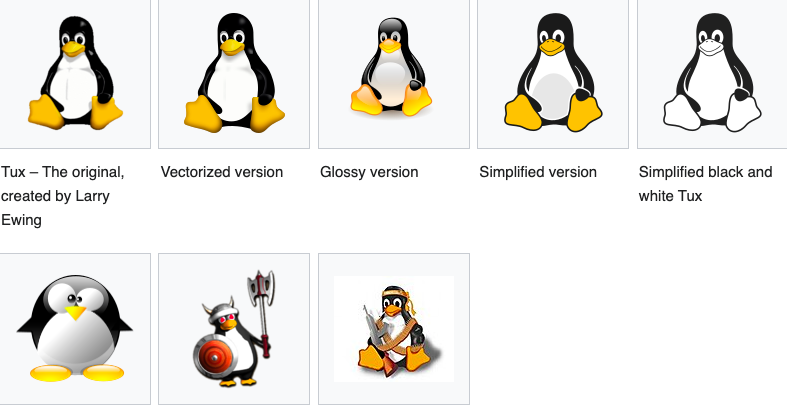When you think of the operating system Linux the first thing that comes to your mind is Tux, a cute penguin. It has represented Linux for over two decades now.
None is more widely recognized for open-source mascots than Tux, the Linux penguin.
But where did Tux come from? And why a penguin? In this post, we answer that and learn about the history of Tux, its evolution over the years, and its enduring significance in the Linux community.
The Origins of Tux, the Linux Penguin
The story starts with an interesting encounter between a penguin and Linus Torvalds, the creator of Linux, in the early 1990s. Linus was visiting the National Zoo in Canberra, Australia, where a cute little penguin bit him. This meeting strongly impacted Torvalds, and he grew to like the idea of a penguin symbolizing Linux.
Besides, at this time, Linux was already competing with other serious competitive operating systems like Windows, and it needed a unique identity of its own that a developer or user could resonate with.
Why a Penguin? The Story Behind the Choice
Why a Penguin? That’s an interesting question. The answer simply lies in its practicality and symbolism. Linus’s encounter and fondness partially inspired the choice of this animal. Due to the unique qualities a penguin represents.
Get exclusive access to all things tech-savvy, and be the first to receive
the latest updates directly in your inbox.
A penguin is approachable, friendly, and easily recognizable. These qualities resonated with Linux’s open-source nature (accessible, Community-driven), which they took pride in.
In 1996, users of the Linux kernel mailing group exchanged suggestions for mascots and logos, frequently mocking the logos of competitor operating systems or ferocious animals like eagles and sharks.
The penguin had a unique charm, just like the Linux community. It brought a playful vibe, making Linux feel different from the more serious and corporate look of its contenders. Conveying a message that Linux penguin is all about accessibility and practicality for everyone.
Naming the Linux Penguin: How ‘Tux’ Was Born?
Now that it was decided to use a Penguin as a mascot, it was time to name it. The Penguin was named “Tux” ( shortened for a TUXEDO), referring to the animal’s black and white colors. Adding a touch of elegance and personality to the mascot. Interestingly, many think it’s named after Linus Torvalds, but that’s not confirmed, and most probably just a myth.
It became a fitting name as the official mascot for Linux, appearing on websites and documentation.
Today, Tux has become the most recognized icon worldwide, symbolizing the Linux brand and its various distributions. These distributions often feature Tux in a variety of character styles tailored to different Linux programs and projects.
At first, many developers were not thrilled with the adorable image that the Linux kernel adopted. Before Tux’s creation, the Linux kernel mailing list buzzed with suggestions for more formidable mascots, including fierce animals like foxes, eagles, hawks, and even sharks.
Some developers felt that using a cute animal as a mascot could project a weak image to the industry, especially when there were so many powerful alternatives available. Critics argued that Tux seemed more fitting for a toy company than for a serious, successful open-source software organization.
Additionally, Linux Tux Penguin is an open-source image, You’re allowed to edit, add, and adapt. This choice by Linux was a success, and as a result, the Linux penguin became a widely known figure connected to its distributions and products. So Tux was no longer a mascot- it was a symbol of open-source revolution.
The Evolution of Tux the Penguin Linux Over the Years

So Tux the Linux Penguin was designed in 1996. The evolution of the penguin is closely linked to the development of the Linux kernel, which is influenced by user requirements and the efforts of the developer community.

Larry Ewing, a programmer, created the first version of the real mascot. He used the GNU Image Manipulation Program (GIMP), an open-source image editing tool. The initial design showed a cheerful, sitting down, healthy.
This design was released under a permissive license, allowing anyone to use and modify it easily. The mascot has taken on all sorts of looks and styles, so it’s pretty common to spot Tux rocking a superhero outfit, a wizard’s robe, or even ninja gear at various Linux events and distributions.
The original creation took place on an 8-bit display, and the final touch-ups with GIMP were performed on an SGI Crimson.

Larry initially sketched the image as a black-and-white outline, as shown in the first attempt, which was subsequently colorized through a series of steps.
In the end, Ewing designed the original Tux image. The Linux penguin has been designed multiple times. From a playful cartoon to 3D renders. Each design kept the spirit of Linux alive, whether it was created for different Linux distributions, events, or tutorials it always resonates with what the Linux community stands for.
Tux’s Role in the Linux Community
Linux Tux Penguin is more than just a cute penguin. This powerful symbol has been representing the heart and soul of Linux.
Tux embodies the principles of teamwork, liberty, and creativity that lie at the heart of open-source software development.
- Tux the Linux Penguin represents inclusivity, creativity, and innovation in the open-source world.
- As a mascot, it brings together multiple Linux distributions and users, signifying dignity within its community.
- The penguin is used in marketing and products, making it Linux-friendly and attractive to new users with a welcoming image.
- At tech events and hackathons, Tux helps engage the Linux community, creating a fun and inclusive atmosphere.
- Linux Tux Penguin plays a role in educational initiatives as well. Its visually appealing design seems less complicated and promotes open-source technologies that inspire students and beginners to explore this operating system further.
Fun Facts and Lesser-Known Stories About Tux
Here are some fun facts about Linux Penguin the Tux:
- Most of the drawing was completed on a 486 DX2/50 using Linux, relying solely on a mouse and GIMP.
- Many games, including SuperTux, Tux Paint, SuperTuxKart, Tux Racer, Tux Math Scrabble, and others, have included Tux. Gown goes with his famous female counterpart, Tux.
- Surprising many, the Linux penguin Tux has become a popular meme figure.
- It’s hard to believe, but around 90% of the special effects in Hollywood are made using Linux systems!
- In Just for Fun: The Story of an Accidental Revolutionary, there’s a part that talks about how Tux ended up being the mascot for the Linux kernel.
Conclusion
Linux penguin Tux is everything Linux stands for. It began with Linus Torvald’s fun experience with a penguin at the zoo, which inspired Larry Ewing to create the mascot. Tux has since become a lasting symbol of Linux and the open-source movement.
The story of Tux the Linux Penguin showcases the creativity, humor, and teamwork of the Linux community.
As Linux grows and changes, Tux serves as a reminder of the strength found in community-driven innovation. Whether you are a developer, a system administrator, or just a supporter of open-source software, Tux represents the significant impact that dedicated individuals can achieve when they unite to build something remarkable.
FAQs
1. Who created the Linux penguin mascot?
The Linux penguin mascot, Tux, was created by Larry Ewing in 1996 with the help of GIMP software.
2. Why is there a penguin in the Linux logo?
A Linux penguin is approachable, friendly, and easily recognizable. These qualities resonated with Linux’s open-source nature (accessible, Community-driven), which they took pride in.
3. What is the history of Linux Penguin Tux?
A heartwarming experience with a penguin at the National Zoo in Australia in the early 1990s had a major effect on Linus Torvalds, the man behind Linux.
4. What significance does Tux hold for Linux users?
Tux the Linux Penguin embodies the open-source standards of Linux, representing community, freedom, and innovation.
5. Is Linux Tux penguin available for use in personal or commercial projects?
Yup, Tux is open-source, a bit similar to Linux, and can be operated under the same principles of freedom and collaboration.



